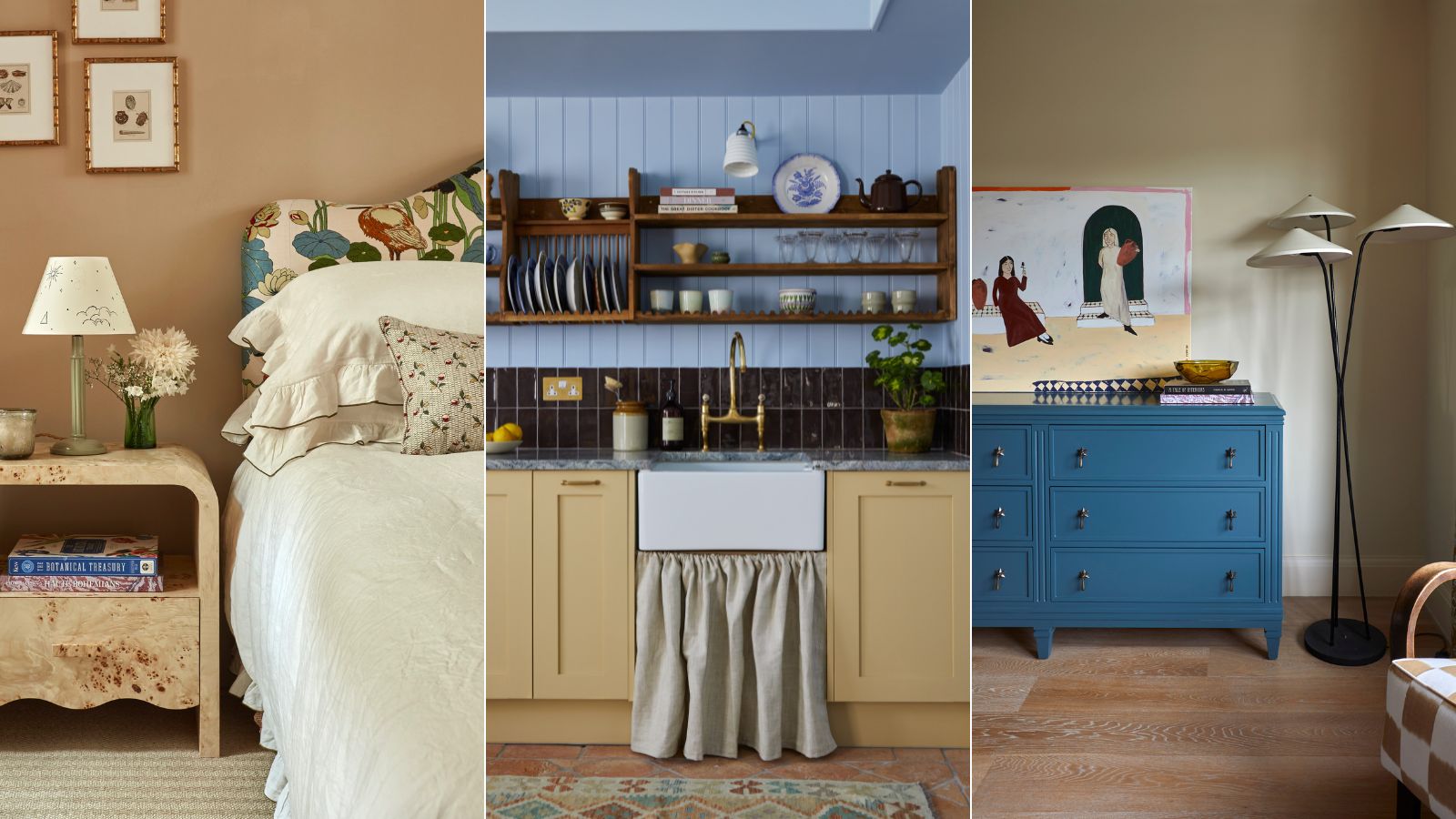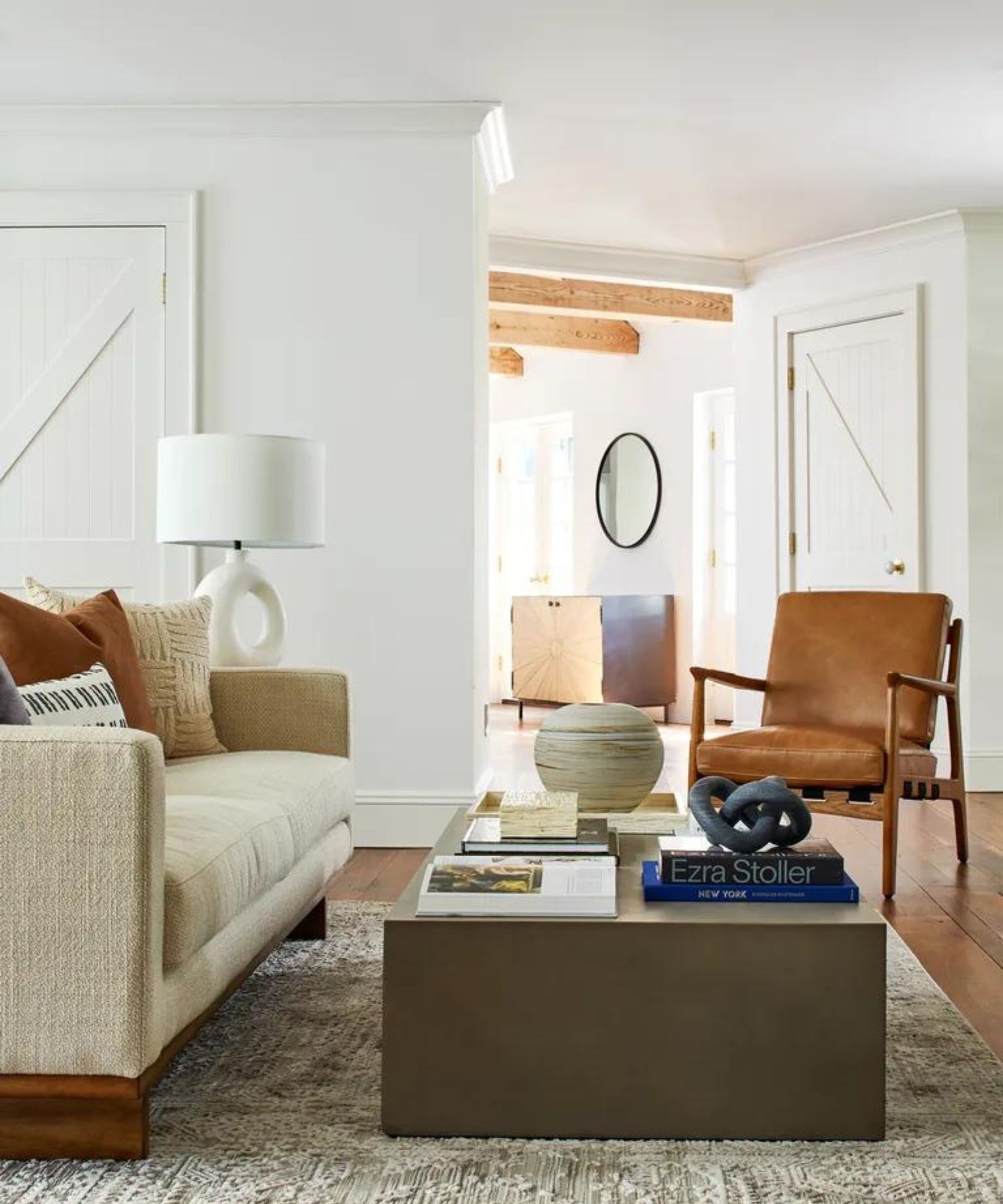Slow decorating is the antidote to instant makeovers – here's why I'm embracing it in my home
Not everything in life is a race, least of all creating a home. Here's how to embrace taking the slow road in your interior design


As a seasoned renovator, I can't even count the number of decisions I have made that I wished I had just taken a deep breath and thought out properly before committing. So to prove I have finally learned my lesson, I'm welcoming the idea of slow decorating into my home with open arms.
I get it, when you're renovating a house or even just redecorating, all you want is for it to be done and dusted. Literally. But forget the idea that slow = never done. Going slow doesn't need to mean taking your renovation ideas at a snail's pace and living in chaos.
Slow decorating focuses on carefully considering, plotting, planning, and refining until you're happy. It's about minimizing random overspending and decision fatigue. And it's about enjoying it all along the way.
Here, I asked seasoned interior designers for their take on the benefits of slow decorating. For selfish reasons, but for you, too. Let's see what they have to say.
Interior Designers On The Benefits Of Slow Decorating Your Home
In a different vein to slow renovating, slow decorating is more considerate of the finer things in life. It's an approach to making decorating decisions (paint ideas, styling a shelf, choosing lighting, hardware, the list goes on...) that are done at the right speed, instead of striving always to do things faster. The slower way to decorate your home should, in theory, help you to do it better.
Approach it like you would your garden. Your home takes time to cultivate and should be given time and space to breathe, to grow and to evolve just as you do within its walls. Here are 5 reasons why slow decorating might benefit you. And me.
1. Slow decorating allows you to create meaningful spaces

Slowing down places importance on timelessness and being more intentional with the design process. Often, that means doing less at all once and prioritizing focusing on the things that matter the most to you. Be that a color trend, wallpaper or upholstery decisions, or hanging sentimental objects and items in a way that shows them off best.
Design expertise in your inbox – from inspiring decorating ideas and beautiful celebrity homes to practical gardening advice and shopping round-ups.
'As Americans, our culture is based on speed and the speed of getting what you want, when you want it. We want instant gratification,' explains Kristen Fiore, owner and principal designer of Kristen Elizabeth Design. 'Because of this, in design, we tend to lose the story. The story is the why and the love in the creative process. One-of-a-kind items and one-of-a-kind spaces include this story, and what the story costs is time.'
'The design takes time is what I often tell clients,' Kristen says. 'A slower process allows you to create meaningful spaces that are custom to your home, and avoid the pitfalls of trends that could date your aesthetic in a matter of years.'
'As designers, sometimes you can ruminate for quite a while on a space until an idea, a color, a material, or a shape comes forward to create an overall vision. When you rush, you lose this creativity and originality that is thoughtfully designed just for one person or one family,' she adds. 'Delayed gratification often brings long-term appreciation, happiness, and satisfaction.'
2. It affords you the time to understand what you need from a space

Unlike a 60-second reel or an HGTV-style one-and-done reveal, this approach allows you to really sit back and assess a space over an extended period. By doing this, you can gain a better understanding of how a room and space works for you, how you move about that space, the lighting that floods in on a morning or late afternoon, and work these things into the final design.
'Slow decorating is great because it gives you time to understand your habits in your space,' agrees designer Linda Hayslett of LH.Designs. 'It also helps you to identify what you like about the space and what you don't like, to make sure you find the right piece to make a statement.'
'But, it can also be detrimental because if you are always waiting for the perfect piece, you may never pull a room or home together,' Linda warns. 'Spaces are meant to be fun, interesting, and curated. And that takes some time, but it's ok if something doesn't work. The point is to see how you react to things when figuring out your vibe in a space.'
3. Slowing things down relieves some of the stress

Decision fatigue is a very real and very stressful thing. The amount of decisions you're required to make can be overwhelming, especially with the amount of options available to us. You don't want to be like me and already considering what I would do differently in my remodel if I had my time anew. But alas, making snap and rash decisions can do that to a person.
'The pressure to completely decorate your whole home all at once when you're going through any kind of home update – be that moving to a new home, undertaking a refresh, or going through a big reno – is a huge source of stress for many people,' says renowned interior designer Kathy Kuo.
'I say that it is absolutely a good thing to take your time and go with a slower decorating process,' she suggests. 'A slower approach to decorating means that you'll ultimately end up being smarter with your budget, more thoughtful with your choices, and just overall more at peace so that you can actually enjoy decorating (it should be fun!).'
And that’s the charm of slow decorating: it’s about enjoying where you are in the process, and not feeling the need to rush it along. Let's all take a collected deep breath.
4. And it can help you to manage budget

Slow decorating is essentially the antithesis of fast fashion, without the quiet luxury price tag. Because ultimately, by slowing down you have the added benefit of being more careful and more intentional with every decision and purchase. And in turn, minimizing regrets, repurchases, and the need for redecorating.
'The most obvious benefit of slow decorating is that you can stretch your investments out over a longer period,' says Bethany Adams. 'So, instead of forking over all of your money at once, you'll be able to rationalize all sorts of major purchases as being "once in a lifetime." Another pro is that you'll have time to discover how you live in your space, what pieces you could use and where, and enjoy the occasional surprise purchase, which is the most fun of all.'
'When you approach interior design with an attitude of let's get this done now, the cost can be significant from a monetary standpoint, but also in quality and originality,' adds Kristen. 'If you move forward slowly, it allows you to explore all options in thoughtful steps and look at alternatives, as sometimes a more appropriate option presents itself at a later stage. As a society, it helps us remember that good things are worth the wait.'
5. Ultimately, slow decorating lets you focus on you

Not only does slowing down afford you more time to focus on yourself and your family (renovations are a life-altering, time and money pit) but it also helps you to design a home that feels like you.
'Taking a slow decorating approach not only encourages deliberate and meaningful choices but also gives you permission to be authentic in your space,' says Ginger Curtis, designer at Urbanology Designs. 'It allows you to curate a home that reflects not only who you are currently, but also who you aspire to be.
'This authenticity adds depth and character to your living environment, creating a space that feels genuinely yours and resonates with your values and aspirations.'
This can come down to something as simple as dopamine decor that reflects your personality, or a collection of nostalgic photos, objects, and oddities on a bookcase. 'Shelving displays can be evolved easily, refreshing the overall feel of the room in subtle ways, for example simply by moving a treasured object to a new place within the frame, and of course by adding new memories and mementos as time goes past,' adds Felix Milns of HUX London. 'Shelves are such a personal piece of furniture that will be the backdrop to the lives of those in the home as they unfold over the years; one which you can continue to add to over time.’
On a final note, slow decorating focuses on quality over quantity, on buying less and buying better. In turn, this means it is a much more eco-friendly approach. Look to slowly and carefully curate your home with upcycled pieces, decorating with antiques, or consciously looking to be more sustainable in your interior design. Not only this, but give yourself the space to make better-informed decisions that you won't come to regret (guilty) and you'll feel so much more at home, at home. A slower journey is quite often the best-trodden path.

Charlotte is the style and trends editor at Homes and Gardens and has been with the team since Christmas 2023. Following a 5 year career in Fashion, she has worked at many women's glossy magazines including Grazia, Stylist, and Hello!, and as Interiors Editor for British heritage department store Liberty. Her role at H&G fuses her love of style with her passion for interior design, and she is currently undergoing her second home renovation - you can follow her journey over on @olbyhome